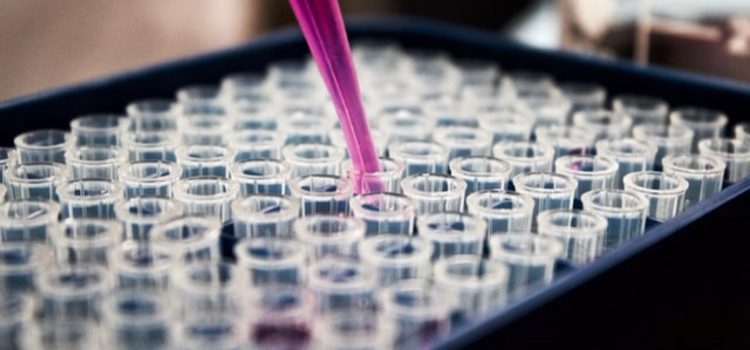

This article is an excerpt from the Shortform book guide to "Life Force" by Tony Robbins, Peter H. Diamandis, and Robert Hariri. Shortform has the world's best summaries and analyses of books you should be reading.
Like this article? Sign up for a free trial here.
Can human aging be reversed? How can age-reversal technology change society as we know it?
Aging used to be conceived as an irreversible phenomenon. However, as medical technology advances, scientists are beginning to reconsider this long-held view.
Here’s a look at several ongoing innovations that could one day help us reverse the human aging process.
Reversing the Human Aging Process
Robbins, Diamandis, and Hariri investigate some innovations that are currently underway that could revolutionize the medical field and help reverse aging. This includes age-reversal technology that uses the body’s pathways to direct cell production, a company that’s working towards growing human organs for transplantation, artificial intelligence technology that could create personalized drugs, and microscopic robots that can be deployed into a person’s body to fight disease head-on.
Using the Body’s Wnt Pathway
The authors explain how a company called Biosplice is working on using a natural biochemical pathway in the body called the Wnt signaling pathway to essentially reverse aging by restoring any part of the body that’s damaged. This pathway tells your stem cells to make new cells and tissue that physically replenish your body. As we age, our Wnt signaling pathway becomes distorted by toxins and poor lifestyle choices, and our stem cells start producing too much of some tissues and too little of others, resulting in illness.
Biosplice is creating medicinal molecules that interact with this pathway to tell specific stem cells to create more or less tissue based on what the body needs and restore the body’s natural balance. Phase 3 trials for their drug Lorecivivint as treatment for osteoarthritis are currently underway.
| The Wnt Pathway and Synthetic Molecules The Wnt signaling pathway has been biologically conserved over many millennia and is present in all animals. It’s activated by naturally occurring molecules called Wnt proteins that produce different effects—including the formation of organs, changes to the behavior of cells, and the patterning of neurons—depending on which of the 19 Wnt proteins are secreted and which branches of the pathway are activated. Because they are highly hydrophobic (unable to be mixed with or dissolved in water), it’s difficult to manufacture synthetic Wnt proteins. However, Lorecivivint’s phase 3 trials continue to show promise for long-term osteoarthritis relief, though they have yet to receive FDA approval. The company is also working to develop a drug called cirtuvivint, a cancer treatment that would target solid tumors. It is currently in phase 1 trials. Additionally, Biosplice is working on a novel type of drug that would fight liquid cancers. |
Growing Human Organs
According to the authors, a company called United Therapeutics is working toward the ability to grow and 3D-print organs for transplantation. They note that there are over 100,000 people in America currently waiting for an organ transplant and that most of them will never get one. Scientists are currently working on using pigs—a species whose organs happen to be of similar size and shape to humans’—to replicate organs for humans, and they’re using CRISPR gene editing technology to edit the organs’ genes so that they won’t be rejected if transplanted into a human host.
However, since organs can still be rejected long after transplantation—resulting in recipients having to take immunosuppressants for the rest of their lives—the company is also working toward growing organs from scratch from a patient’s own cells so there would be no risk of rejection and no need for immunosuppressants.
Creating Personalized Drugs With AI
The authors describe how artificial intelligence technology could be used in the near future to create personalized drugs for any given illness. Researchers are developing generative adversarial networks (GANs), technologies designed to take a description of a drug (for example, “a compound that does X”) and come up with a molecule that would fit those characteristics. It currently takes billions of dollars and many years to bring new drugs to the market, but using GANs could revolutionize the pharmaceutical industry and allow researchers to bring drugs to market much more quickly than the traditional method. AI’s predictive algorithms could even be used to predict the results of clinical trials, reducing the need for these costly and time-consuming tests as well.
| Other Applications of GANs Generative adversarial networks have created a new wave of innovation in generative AI, or what’s now known as artificial imagination. AI is capable of creating realistic images and text. Here’s how this works: GANs consist of two neural networks, each of which performs a distinct function. One is a generator, which is fed real data. It analyzes that data and generates new, fake data samples. These samples are then processed by the second network, a discriminator, which is responsible for filtering out examples that are clearly fake. The samples it doesn’t filter out are accurate enough to appear real. This is what enables art AI generators, for example, to take a text description (original data) and turn it into generated images that look real enough to have been created by a human. |
Repairing the Body With Microbots
Finally, the authors describe a new technology that uses remote-controlled microbots to travel to specific locations in the body to release targeted drug treatments with surgical precision. This could eliminate the need for treatments like chemotherapy, which attacks the entire body. Researchers are hoping to use these bots in the near future to detect and treat illnesses like degenerative brain diseases. Further in the future, these bots may become small enough to manipulate the body at the atomic level.
(Shortform note: A recent breakthrough in the production of microbots may greatly accelerate the technology’s development. A recently devised new production method allows scientists to produce over 100 microbots per minute, which is 10,000 times faster than they were able to produce them previously. In addition to delivering medicines, scientists have also developed a method of using microbots to deliver stem cells to a specific part of the body, where the microbot would then dissolve and the stem cell would stay in place and begin performing its intended function.)

———End of Preview———
Like what you just read? Read the rest of the world's best book summary and analysis of Tony Robbins, Peter H. Diamandis, and Robert Hariri's "Life Force" at Shortform.
Here's what you'll find in our full Life Force summary:
- How new technology may dramatically expand the human lifespan
- Lifestyle changes you can make now to increase your lifespan
- Whether or not it's possible for humans to become immortal






